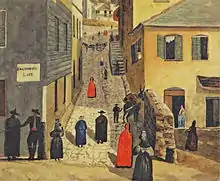The Gibraltar Portal Gibraltar (/dʒɪˈbrɔːltər/ jih-BRAWL-tər, Spanish: [xiβɾalˈtaɾ]) is a British Overseas Territory and city located at the southern tip of the Iberian Peninsula. It has an area of 6.7 km2 (2.6 sq mi) and is bordered to the north by Spain (Campo de Gibraltar). The landscape is dominated by the Rock of Gibraltar, at the foot of which is a densely populated town area, home to some 32,688 people (2022 estimate), primarily Gibraltarians. Gibraltar has been inhabited since Prehistory. Around 950 BC, the Phoenicians founded the nearby town of Carteia and used a cave in Gibraltar as a shrine for several centuries, as did ancient Greeks and Romans, who considered the "Rock" one of the Pillars of Hercules in the legend of the creation of the Strait of Gibraltar by Heracles. After the fall of the Western Roman Empire, it was part of the Visigothic Kingdom of Hispania for three centuries, until a Berber expedition led by Tariq ibn Ziyad landed near Gibraltar in 711 and went on to conquer most of the Iberian Peninsula for Islam. In 1160, a permanent settlement with a castle was built by the Arabs. From 1274, the town was fought over and captured subsequently by several Arab and Christian dynasties until it was captured by the Kingdom of Castile in 1462. In 1704, Anglo-Dutch forces captured Gibraltar from Spain during the War of the Spanish Succession. The territory was ceded to Great Britain in perpetuity under the Treaty of Utrecht in 1713. It became an important base for the Royal Navy, particularly during the Napoleonic Wars and World War II, as it controlled the narrow entrance and exit to the Mediterranean Sea, the Strait of Gibraltar, which is only 14.3 km (8.9 mi) wide. This choke point remains strategically important, with half the world's seaborne trade passing through it. The sovereignty of Gibraltar is a point of contention in Anglo-Spanish relations, as Spain asserts a claim to the territory. Gibraltarians overwhelmingly rejected proposals for Spanish sovereignty in a 1967 referendum, and for shared sovereignty in a 2002 referendum. Nevertheless, Gibraltar maintains close economic and cultural links with Spain, with many Gibraltarians speaking Spanish as well as a local dialect known as Llanito. (Full article...) Selected article - A 5.25 inch quick-firing dual-purpose gun at Princess Anne's Battery, Gibraltar The Gibraltar peninsula, located at the far southern end of Iberia, has great strategic importance as a result of its position by the Strait of Gibraltar where the Mediterranean Sea meets the Atlantic Ocean. It has repeatedly been contested between European and North African powers and has endured fourteen sieges since it was first settled in the 11th century. The peninsula's occupants – Moors, Spanish, and British – have built successive layers of fortifications and defences including walls, bastions, casemates, gun batteries, magazines, tunnels and galleries. At their peak in 1865, the fortifications housed around 681 guns mounted in 110 batteries and positions, guarding all land and sea approaches to Gibraltar. The fortifications continued to be in military use until as late as the 1970s and by the time tunnelling ceased in the late 1960s, over 34 miles (55 km) of galleries had been dug in an area of only 2.6 square miles (6.7 km2). Gibraltar's fortifications are clustered in three main areas. The densest fortifications are in the area where historically Gibraltar was under the most threat – at the north end of the peninsula, the North Front, facing the isthmus with Spain. Another group of fortifications guards the town and the harbour, referred to as the West Side. The southern end of the town is guarded by the South Land Front. Few fortifications exist on the east side, as the sheer cliff of the Rock of Gibraltar is a virtually impassable obstacle. Further fortifications occupy the plateaus of Windmill Hill and Europa Point at the southern end of the peninsula. Lookout posts and batteries on the summits of the Rock provide a 360° view across the Strait and far into Spain. Although Gibraltar is now largely demilitarised, many of the fortifications are still intact and some, such as the Great Siege Tunnels and the Charles V Wall – where many of Gibraltar's population of Barbary macaques live – have become tourist attractions. (Full article...)Selected picture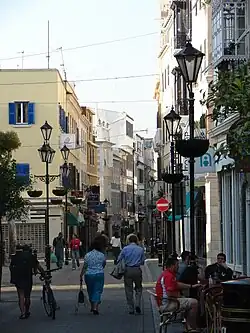 Main Street Photo credit: User:RedCoat10
Main Street, Gibraltar's main arterial street recognised today as Gibraltar’s main commercial and shopping district.
Selected quote
SubcategoriesSelect [►] to view subcategories
Gibraltar Gibraltar-related lists Buildings and structures in Gibraltar Gibraltarian culture Economy of Gibraltar Education in Gibraltar Environment of Gibraltar Geography of Gibraltar Gibraltarian people Government of Gibraltar Health in Gibraltar History of Gibraltar Organisations based in Gibraltar Politics of Gibraltar Society of Gibraltar Images of Gibraltar Gibraltar stubs Selected biography -Admiral of the Fleet Sir John Leake (4 July 1656 – 21 August 1720) was a Royal Navy officer and politician. As a junior officer he saw action at the Battle of Texel during the Third Anglo-Dutch War. He then distinguished himself when he led the convoy that broke the barricading boom at Culmore Fort thereby lifting the siege of Derry during the Williamite War in Ireland. As a captain he saw action in some of the heaviest fighting (70 of his men were killed) at the Battle of Barfleur and was also involved in a successful attack on the French ships at the Battle of La Hogue during the Nine Years' War. Leake went on to be Commander-in-Chief, Newfoundland and then, as a flag officer, served as Second-in-Command to Admiral George Rooke at the Capture of Gibraltar and he commanded the vanguard in the Battle of Málaga during the War of the Spanish Succession. He later returned to Gibraltar with a combined English, Dutch and Portuguese force of 35 ships and defeated Baron de Pointis at the Battle of Cabrita Point. (Full article...)Did you know...
General imagesThe following are images from various Gibraltar-related articles on Wikipedia.
Topics Buildings: The Convent | Dudley Ward Tunnel | Garrison Library | Moorish Castle Communications: .gi | Gibraltar Broadcasting Corporation | Gibraltar Chronicle | Telecom dispute Culture: Cuisine | Gibraltarian people |Gibraltarian status | Languages | Llanito | Music Flora and fauna: Gibraltar Barbary Macaques | Gibraltar candytuft | GONHS | List of birds of Gibraltar | Mammals | List of reptiles and amphibians in Gibraltar | Rock of Gibraltar | The Alameda Gardens History: Battle of Gibraltar | Death on the Rock | Explosion of the RFA Bedenham | George Augustus Eliott, 1st Baron Heathfield | George Rooke | Gibraltar real | Great Siege of Gibraltar | History of the Maltese | History of Nationality | Kingdom of Gibraltar | Military history of Gibraltar during World War II | Moorish Castle | Aurora incident | Pillars of Hercules | Treaty of Utrecht Military: British Forces Gibraltar | Royal Gibraltar Regiment | RAF Gibraltar | HMS Gibraltar | Gibraltar Services Police | Royal Gibraltar Police Symbols: Coat of arms | Flag | Gibraltar Anthem | Other Flags Politics and economy: Chief Minister | Constitution Order (1969, 2006) | Disputed status | Elections | Gibraltar Constitution Order 2006 | Parliament | Gibraltarian pound | Governor | Political parties Religion: Cathedral of St. Mary the Crowned | Cathedral of the Holy Trinity | Great Synagogue | Hinduism | History of the Jews in Gibraltar | Ibrahim-al-Ibrahim Mosque | Methodism | Roman Catholicism | St Andrew's Church Related portalsThings you can do
See also
WikiProjects
Associated WikimediaThe following Wikimedia Foundation sister projects provide more on this subject:
Discover Wikipedia using portals
| ||||||||||||||
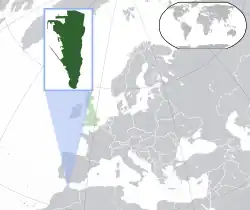






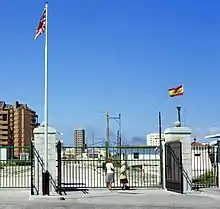
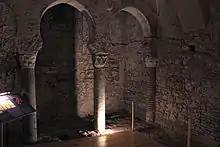






.jpg.webp)
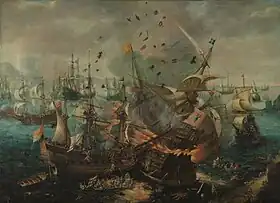


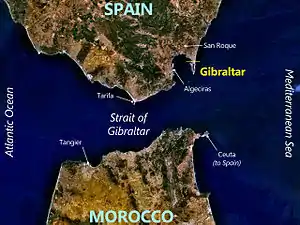
_(2).jpg.webp)
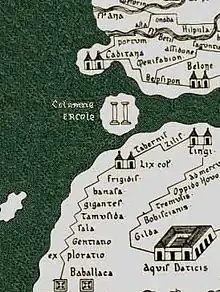

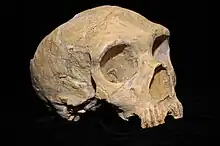



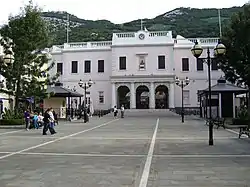



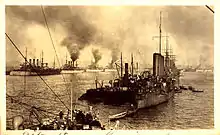


.jpg.webp)


